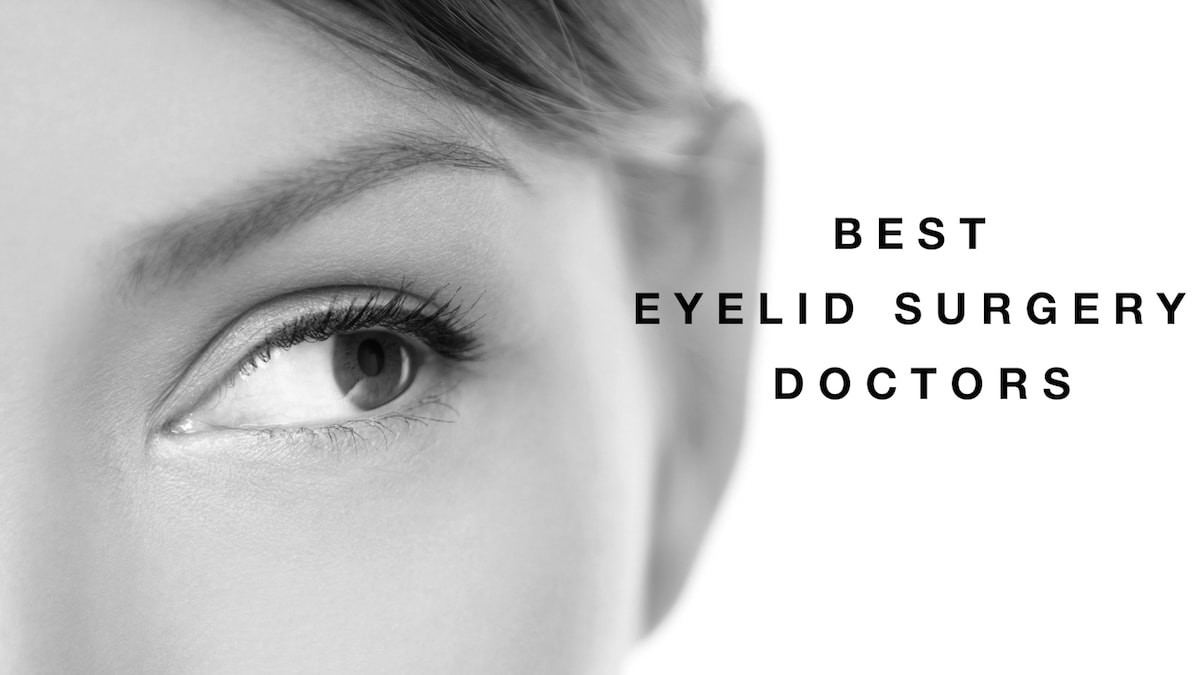
Finding an experienced doctor is sometimes difficult when it comes to cosmetic surgery. Patients that are unhappy with the appearance of their eyelids can use Cosmetic Town to find the best doctor to give them the appearance they desire. The following is our list of the “Best Eyelid Cosmetic Surgery Doctors in Beverly Hills” as determined by the Cosmetic Town intelligent system:
Want to know more about the methods used by Cosmetic Town to determine the best cosmetic eyelid surgery doctors in Beverly Hills?
Here are the criteria used to choose the top doctors in this article: Cosmetic Town makes it Easy to Find the Best Beverly Hills Doctors in 2018.
Cosmetic Eyelid Surgery Explained
Eyelid surgery, also known as an eye lift, is surgery performed on the eyelids of patients. There are various techniques used during eyelid surgery including blepharoplasty which is a term used to describe plastic surgery done on the eyelids to remove excess skin and fat. Patients consider blepharoplasty if droopy or sagging eyelids keep them from being able to completely open the eyes or pull down the lower eyelids. Removing excess tissue from the upper eyelids can also be used to improve the vision of a patient. Blepharoplasty can make the eyes appear younger and more alert.
Blepharoplasty is an ideal option for patients that have:
Blepharoplasty may also be performed alongside other procedures like a brow lift, facelift or skin resurfacing. Depending on the necessity of the procedure, insurance might not cover the cost. Insurance coverage depends on whether the surgery repairs a condition that impairs vision. If the surgery is performed solely to improve the appearance of the area, the cost probably won't be covered by insurance. Lower lid blepharoplasty is almost always done simply for cosmetic reasons.
What to Expect during Eyelid Surgery
If the surgery is performed on the upper and lower eyelids, the surgeon generally works on the upper lids first. The surgeon cuts along the fold of the eyelid, removes some excess skin, muscle and fat and then closes the cut.
During surgery for the lower lid, the surgeon makes a cut just below the lashes in the eye's natural crease or inside the lower lid. The surgeon then removes or redistributes excess fat, muscle and sagging skin before the cut is closed.
If the upper eyelid droops close to the pupil, the surgeon may perform blepharoplasty with a procedure called ptosis to provide additional support to the eyebrow muscle.
What to Expect after Eyelid Surgery
After surgery, patients are allowed to spend time in a recovery room where they are monitored for complications. They can leave later that day to recuperate at home. Following the surgery, patients may temporarily experience:
Double Eyelid Surgery
Double eyelid surgery, performed mainly on Asian patients, makes the eyes look larger and more alert. Double eyelid surgery is a specific type of eyelid surgery in which creases in the upper eyelids are formed in order to create double eyelids. Some people have visible eyelid creases known as double eyelids. Other patients are born without eyelid creases and this is known as a single lid or a monolid.
Patients have double eyelid surgery for a number of reasons including:
The surgery can be carried out via an incision method or a non-incision method. The incision method involves the following steps:
The incisional technique may be a good option if patients have thick skin, need extra skin and fat removed or are looking for a more permanent result.
Eyelid Revision and Reconstruction
Eyelid revision surgery is a surgical procedure intended to correct the results of a previous eyelid surgery performed to aesthetically modify the eyelids and the area around the eyes. This procedure is for patients who have undergone blepharoplasty and are not satisfied with the results. The procedure is carried out solely to correct defects and disfiguration of the eyelids. The eye area is delicate and dynamic so there are a lot of things to be considered when choosing a treatment plan for the revision procedure. There are primarily two types of blepharoplasty correction:
Canthoplasty is a reconstructive surgical procedure that corrects drooping or sagging eyes by tightening the muscles or ligaments that give support to the outer corners of the eyelid. Canthoplasty essentially alters the shape of the eye. Canthoplasty is performed at the outer corner of the eye (the canthus), in the section where the upper and lower eyelids meet, which is medically referred to as the lateral canthus. For the majority of people, this meeting point should be positioned just above the medial canthus which is the junction of the lower and upper eyelids near the nose.